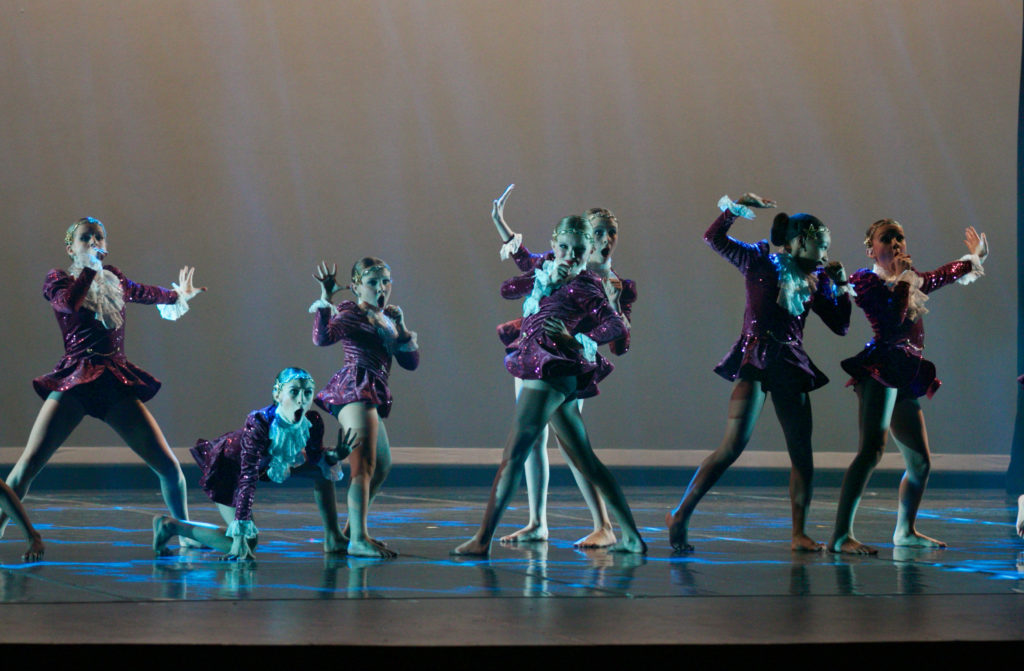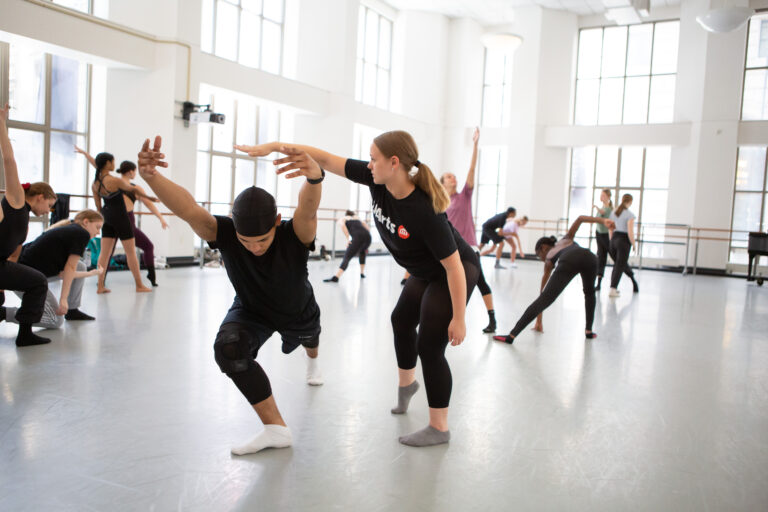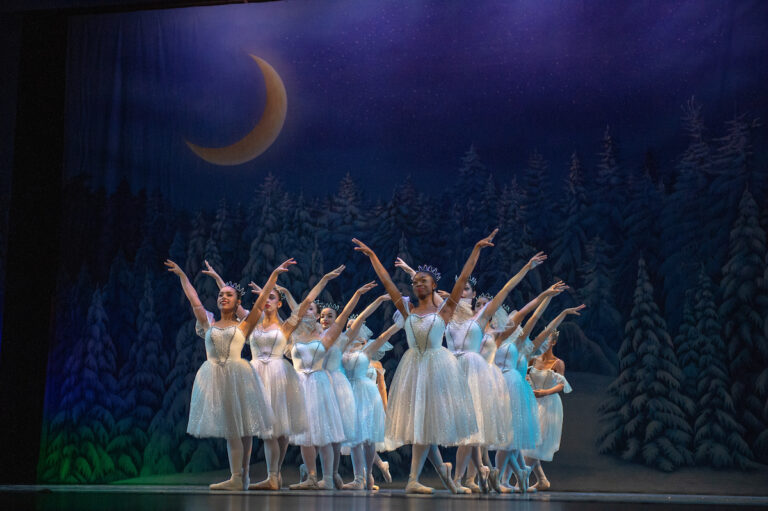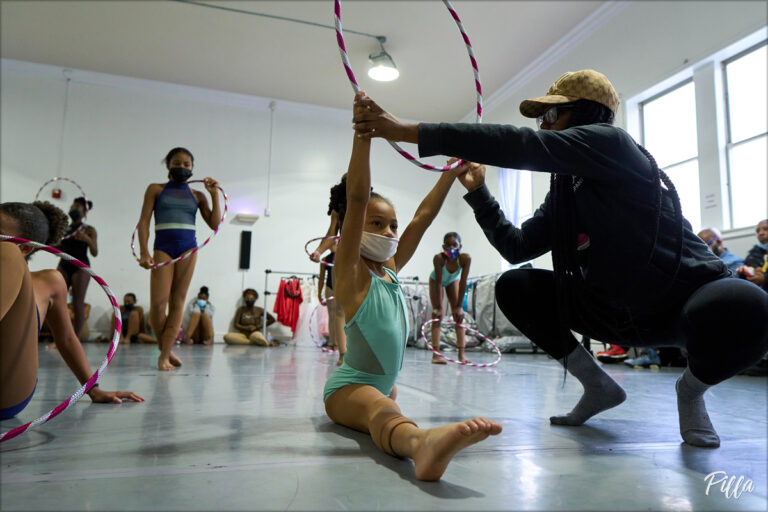
As Dance Impressions enters its 30th competition season, 2021–22 is destined to look a bit different. The Utah-based studio offers several distinct study tracks—artistic/performance, recreational, competition—but the pandemic brought to light the need for more flexible options. This year, the studio will give all dancers the option to add select competition days.
For owner Kandee Allen, that translates to a lot of fresh talent entering the competitive program—and a lot of new faces to acclimate to competition life. “My goal is to help newbies be able to confidently step into any competition setting,” says Allen.
Allen’s not alone in wanting new competitive dancers to feel at ease. The dawn of a new season always brings with it a new crop of dancers, many of whom have never set foot on the competition stage and don’t know what to expect. From early wake-up calls to long waiting times to sensory overload (and lots of fun stuff, too!), it’s vital to prep dancers on what lies ahead.
Here’s how studio owners and teachers can help set first-time competitors up for success.

Help new dancers feel welcome.
At The Dance Stop in Willoughby Hills, Ohio, owner Lisa Stanziale helps new competition dancers get into the groove by pairing them with an older “big sis” mentor who has been competing for years. “Not only do they have a buddy family they can reach out to for any questions, but their big sis might give them a small welcome gift or decorate their door if we’re all staying at a hotel,” says Stanziale. “It boosts spirit and provides a built-in support system.”
Speak their language.
More seasoned competitors may understand terms like “projection” and “facials,” but first-timers may not plug into these concepts right away. Allen uses analogies to help young dancers better grasp the judges’ criteria. “I tell them, ‘When you go onstage, it’s like you have 100 M&Ms, and every time you don’t smile, the judge will take one away,’” explains Allen. “They don’t understand deductions or docking points, so we try to do our best to communicate in a way that helps them do their best and be successful.”

Eliminate overwhelm.
Stanziale also does her best to ensure that new dancers don’t feel overwhelmed out of the gate. She typically suggests that dancers do just one or two routines in their first year competing, and offers different commitment levels. (For instance, the hip-hop group doesn’t have as many required classes, whereas jazz and contemporary are more involved.) “I don’t recommend doing too much at first,” says Stanziale. “Every child is different, so you need to figure out where you’re at and what will be most enjoyable.”
Communicate expectations clearly.
When preparing new dancers to compete, Allen lays out everything they need to know ahead of time with a detailed packing list that breaks down each of the competition numbers and related information (such as call time, hairstyle, costume and accessories). But from that point, dancers are expected to show up fully prepared and ready to go. “In the past, we’ve done bag checks, but now we really leave it up to the parents to teach responsibility to the kids,” says Allen.
Allen also debriefs dancers on the strict attendance requirements for competition teams, as she believes “that’s the biggest difference between preparing for a recital and competition—breaking down each dance and working on each section until it’s perfect. Every time someone misses, the whole team’s progress is held back; new dancers need time to absorb the material and clean what they’re being expected to perform.”

Provide a time buffer before they set foot onstage.
Jen Jarnot of Thornton, Colorado–based Artistic Fusion Dance Academy has been attending events with her dancers for 22 years, and during that time, she’s refined their pre-competition routine. To help students center themselves and have enough time to prepare, Jarnot requires parents to drop their child off 90 minutes before their performance time—dressed and ready—to warm up with their dance teacher. She finds that this policy helps eliminate tardiness and last-minute confusion.
“The teacher helps tackle their nerves and warm up their bodies to make sure they’re calm and prepared to go out,” says Jarnot. “It avoids parents showing up late and frazzled, and gives us the best possible outcomes.”
Paint a true picture.
While competitions and conventions can be energizing experiences, they can also be grueling. Stanziale makes sure to give dancers the full picture before they attend any event for the first time. “Competition is intense—it’s a long weekend,” says Stanziale. “Often we’ll get up on Saturday morning at 7:30 am for warm-up, then we’re attending dance classes all day. Competition starts at 4 pm and can go as late as 1 am.”
Helping first-time participants understand that their energy may fluctuate and that the day may be somewhat draining at times can be key to successfully navigating the full competition experience.

Instill a deeper meaning.
Sharing the studio’s mission and goals with young dancers can help them feel grounded throughout the process—and help them learn that the experience is about more than bringing home a trophy.
“Use language kids can understand to help them understand their ‘why’ and the studio’s ‘why,’” urges Jarnot. “We go to competitions so we can have fun performing, be challenged and inspired by others, and grow together as a team. If I effectively articulate that mission, we’ll be happy regardless of how the cards fall.”



